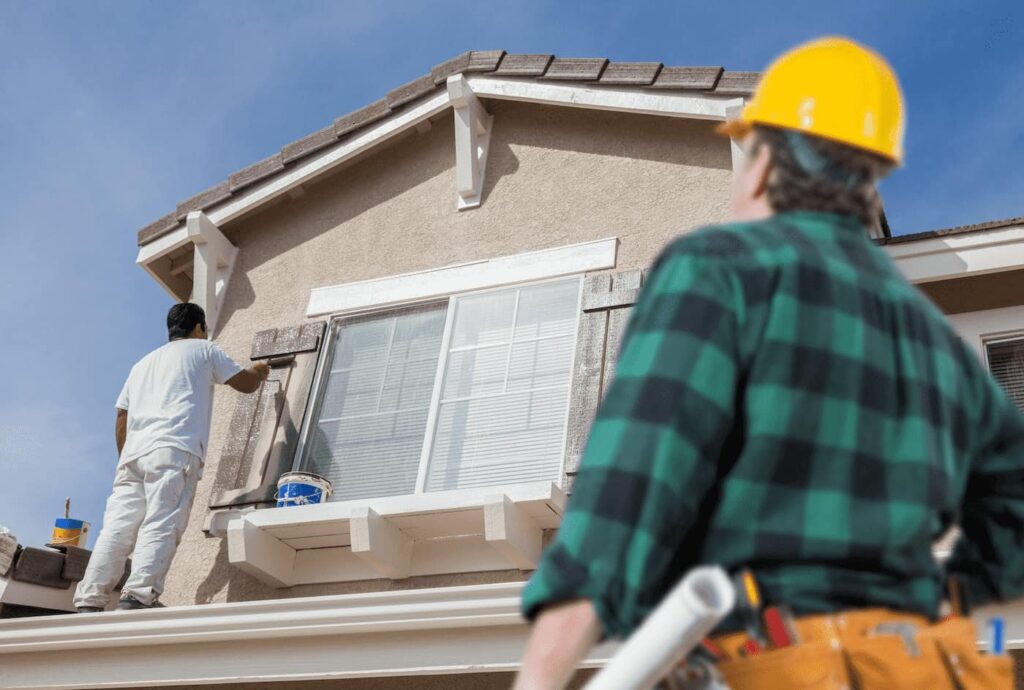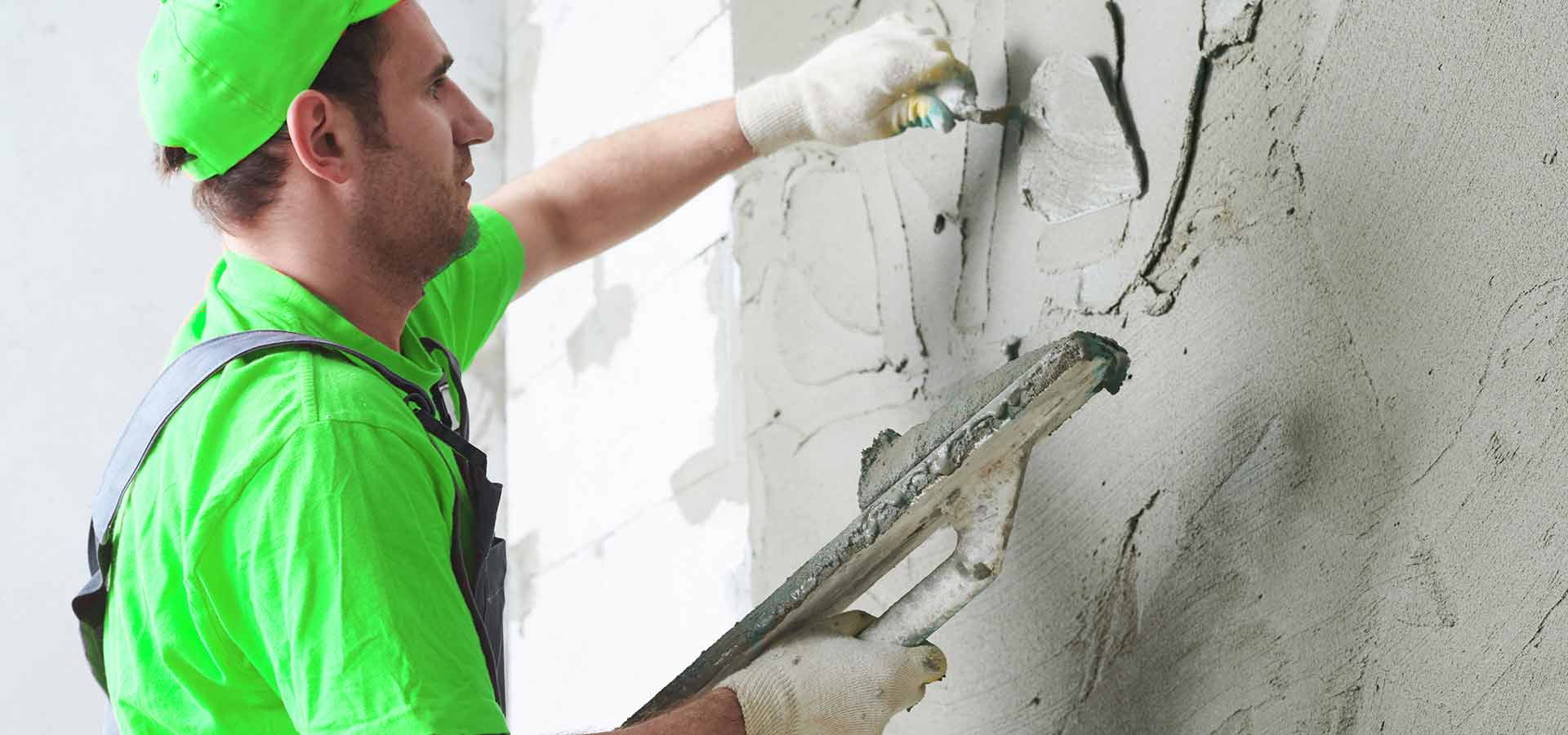Discovering the Flexibility of Stucco in Modern Design
Stucco has long been recognized for its visual charm and adaptability, yet its role in modern architecture warrants a closer evaluation. By discovering its cutting-edge applications, from striking exteriors to energy-efficient styles, one can appreciate exactly how stucco is redefining the boundaries of architectural expression.
Historic Importance of Stucco
The historic value of stucco is profound, as it has played a crucial role in architectural techniques throughout various societies for centuries. Originating in old worlds, stucco was made use of by the Egyptians and Greeks as a flexible and sturdy surface for both interior and outside surface areas. Its flexibility to various environments and ability to mimic extra pricey materials made it a popular selection.
In the Roman age, stucco ended up being a primary attractive aspect, made use of thoroughly in public structures, suites, and temples. The Romans improved the application strategies, enabling for elaborate layouts and relief sculptures. Throughout the Renaissance, stucco experienced a rebirth, particularly in Italy, where it was utilized in intricate facades and ornamental details, showcasing the virtuosity of the period.

Modern Applications in Design
Stucco has actually located restored significance in modern architecture because of its flexibility and visual appeal (stucco contractor). This conventional material is increasingly made use of in modern design, connecting the space between timeless and modern visual appeals. Developers and designers value stucco for its adaptability, allowing it to be applied in different styles-- from minimal structures to elaborate Mediterranean layouts
In property jobs, stucco offers a clean, smooth finish that enhances the aesthetic cohesion of facades. Its capability to adhere to various forms and surfaces makes it a suitable choice for both new constructions and restoration jobs. Furthermore, stucco's resilience and reduced upkeep demands add to its growing appeal in urban settings, where lasting products are necessary.
Industrial applications have likewise welcomed stucco, with several companies going with this material to develop inviting and distinctive stores. Making use of stucco in public structures, such as colleges and recreation center, showcases its capacity for developing aesthetically attractive settings while supplying outstanding insulation buildings.
Color and Texture Advancements
Discovering shade and texture innovations in stucco has actually opened brand-new avenues for developers and architects, improving the product's visual effect in contemporary building. Current developments in pigment technology have actually enabled a larger range of colors, allowing designers to develop striking exteriors that integrate seamlessly with their surroundings or stand apart as vibrant architectural declarations. This adaptability in shade option supplies designers the capacity to stimulate details psychological actions and balance with local visual appeals.
Appearance innovations have actually similarly transformed stucco applications. Strategies such as troweling, spraying, and marking have brought about try these out varied surface coatings, ranging from smooth and fine-tuned to sturdy and responsive. These variants not just add to the structure's character however additionally play a vital role in light communication, enhancing the aesthetic depth and dimensionality of surfaces.
Furthermore, the introduction of artificial stucco options has increased style opportunities, using enhanced longevity and weather resistance while preserving aesthetic allure. As architects proceed to try out innovative shade palettes and textured finishes, stucco remains a pivotal aspect in modern architecture, showcasing the product's adaptability and ageless relevance in contemporary design.
Sustainability and Energy Performance
Advancements in shade and texture have not just enhanced the aesthetic allure of stucco but likewise led the means for better concentrate on sustainability and power efficiency in modern style. As environmental concerns become increasingly prominent, the building sector is turning its attention to products that contribute positively to environmental equilibrium.
Stucco, composed largely of all-natural products such as concrete, sand, and lime, provides a sustainable alternative to more resource-intensive structure materials. Its longevity and resilience lower the demand for regular replacements, thus minimizing waste and resource consumption gradually. Furthermore, modern-day stucco formulas typically include energy-efficient additives that enhance insulation residential properties, decreasing pop over to this site heating & cooling prices for structures.
The reflective top qualities of stucco can also be crafted to reduce warmth absorption, contributing to cooler indoor settings and much less dependence on artificial climate control systems. By advertising power conservation and decreasing the carbon impact of structures, stucco lines up with the principles of lasting design. As designers and contractors take on environmentally friendly techniques and innovative techniques, stucco stands out as a liable and functional selection in modern layout.

Study of Stucco Projects
The adaptability of stucco as a structure material is exemplified in numerous successful building jobs that highlight its practical and visual advantages. One view it now notable instance is the remodelling of the historical Casa de la Guerra in Santa Barbara, California. The use of stucco not only protected the structure's Spanish Colonial Resurgence style yet additionally improved its toughness and weather resistance, ensuring durability while preserving building integrity.
Another compelling case is the modern property project, the Cactus Home in Scottsdale, Arizona. stucco contractor. This striking home attributes a smooth stucco finish that balances with the bordering desert landscape. The stucco's light color shows heat, contributing to energy efficiency, while the textured surface areas include aesthetic passion
Additionally, the Kings Cross redevelopment in London showcases the versatility of stucco in city settings. The application of stucco on modern mixed-use structures creates a natural aesthetic that appreciates historical context while embracing modern design concepts.
These study show how stucco can offer various architectural functions, from conservation and power performance to aesthetic enhancement, making it a versatile selection in modern design.
Final Thought
 In verdict, stucco's historic value and modern adaptability make it a valuable product in modern style. Its ability to integrate classic aesthetic appeals with cutting-edge layout, integrated with innovations in shade and texture, improves its appeal. Moreover, stucco's protecting buildings add to energy effectiveness, while its sustainable qualities align with present environmental priorities. As shown with different study, stucco proceeds to play a crucial function in shaping the building landscape of the modern-day age.
In verdict, stucco's historic value and modern adaptability make it a valuable product in modern style. Its ability to integrate classic aesthetic appeals with cutting-edge layout, integrated with innovations in shade and texture, improves its appeal. Moreover, stucco's protecting buildings add to energy effectiveness, while its sustainable qualities align with present environmental priorities. As shown with different study, stucco proceeds to play a crucial function in shaping the building landscape of the modern-day age. 
In verdict, stucco's historical value and modern-day flexibility make it a beneficial product in contemporary style.